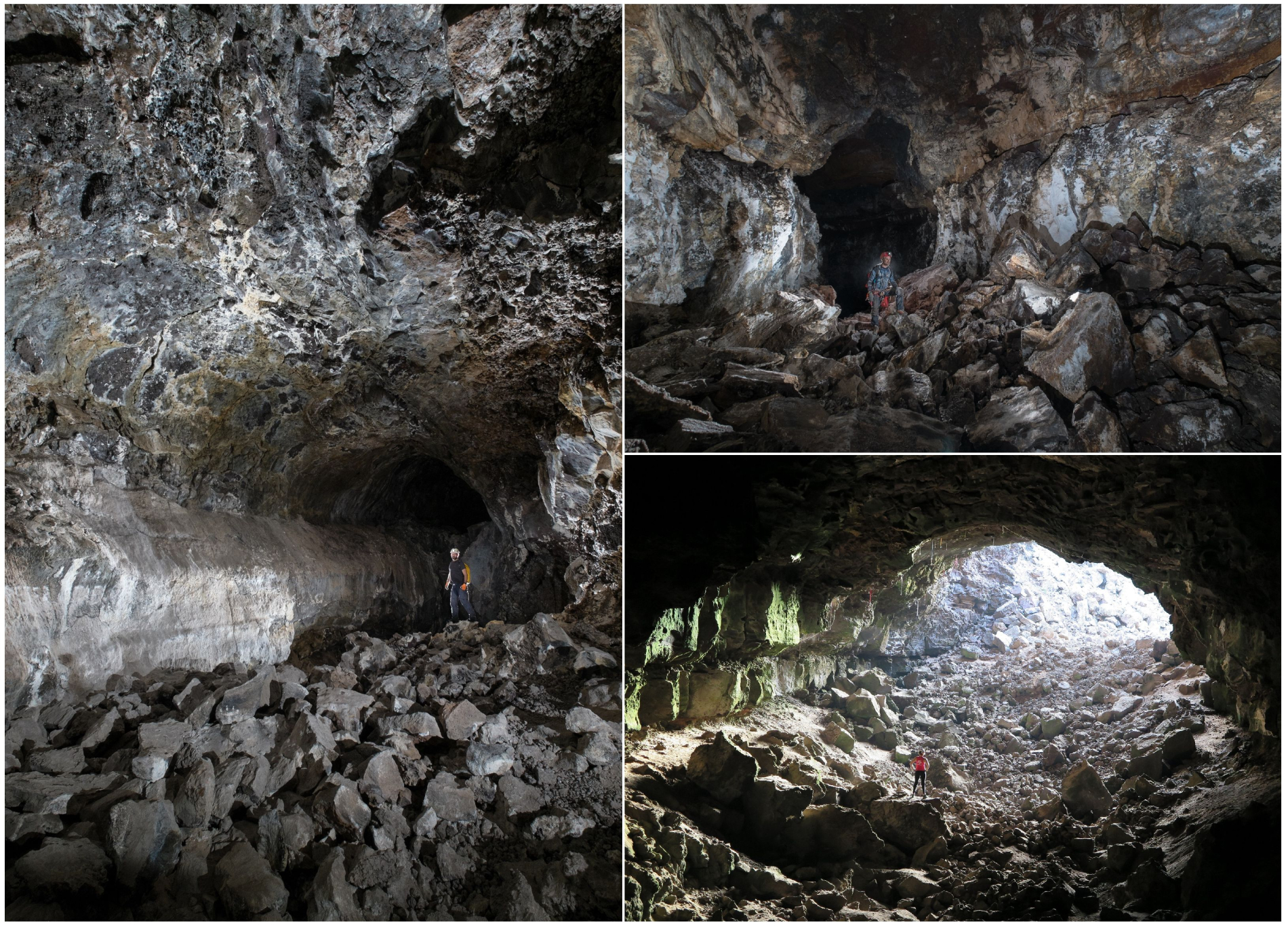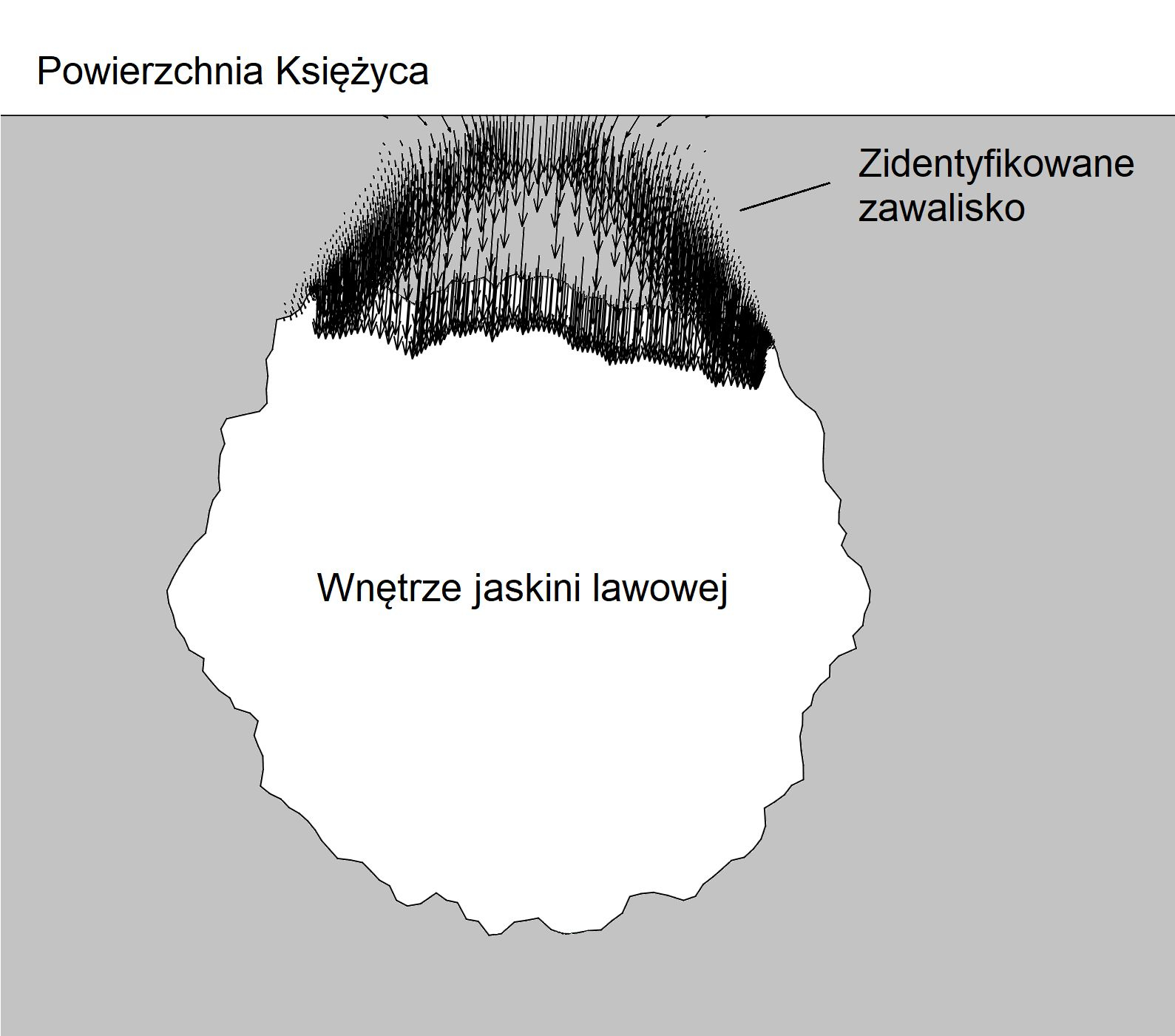YOUR BROWSER IS OUT-OF-DATE.
We have detected that you are using an outdated browser. Our service may not work properly for you. We recommend upgrading or switching to another browser.
Date: 12.01.2024 Category: general news, international cooperation, science/research/innovation

A collapse in the Sea of Tranquility (Mare Tranquillitatis) captured from different angles by the LRO lunar orbiter Lunar Reconnaissance Orbiter) (NASA/GSFC/Arizona State University)
Lava caves on the Moon may be a good place for research in the future but also serve as shelters. The issue of the strength of their ceilings was looked at by Marcin Chwała, PhD, Eng. from Wrocław University of Science and Technology.
The depressions on the Moon's surface were first described in 2009 and it appeared then that some of them were collapsed lava passages that could lead to various types of caves and cavities. They were probably formed during lava flows and, due to the low gravitational force, can reach widths of up to several hundred metres. Although there is no thorough research in this area, there have been ideas of using such caves as bases and shelters for human exploration of the Moon.
Such corridors, due to gravity and other factors such as “earth” quakes (in fact referred to as moonquakes) or meteorite impacts, can cave in to form extensive collapses.
 The subject of lunar caves’ stability along with the analysis of the collapse of their ceilings was taken up by Marcin Chwała, PhD, Eng. from the Department of Geotechnics, Hydrotechnics and Underground and Water Engineering. The results of his research, conducted in collaboration with Prof. Goro Komatsu (from the Italian Università degli Studi "G. d'Annunzio" Chieti – Pescara) and Junichi Haruyama, PhD (Japan Aerospace Exploration Agency), were presented in a paper entitled “Structural stability of lunar lava tubes with consideration of variable cross-section geometry”.
The subject of lunar caves’ stability along with the analysis of the collapse of their ceilings was taken up by Marcin Chwała, PhD, Eng. from the Department of Geotechnics, Hydrotechnics and Underground and Water Engineering. The results of his research, conducted in collaboration with Prof. Goro Komatsu (from the Italian Università degli Studi "G. d'Annunzio" Chieti – Pescara) and Junichi Haruyama, PhD (Japan Aerospace Exploration Agency), were presented in a paper entitled “Structural stability of lunar lava tubes with consideration of variable cross-section geometry”.
“I’ve been interested in astronomy since I was very young and I even studied it for a while. I eventually chose to study and work at Wrocław Tech, but this subject matter has remained close to my heart. In 2017, during my research placement, I met Prof. Goro Komatsu, who was delivering a course related to planetary geology and discussed things including lunar collapses. I was very curious about it, especially as I found that these issues were very poorly described,” says Dr Chwała.
He began his research 1.5 years ago, relying primarily on data acquired by space probes exploring the lunar surface and studies showing the geometry of already measured collapses. No precise information or borehole samples from these sites on the Moon are yet available, so when preparing the calculations, our researcher used resources including laser scans of a lava tube located in the Canary Islands.
“Analysis of the stability of any geological structure on the Moon is extremely hard. We can only rely on estimated parameters, and the use of advanced methods to describe the strength of rocks is pointless in this case,” explains the researcher. “Having said that, we have a very valuable thing at our disposal, namely the collapses on the Moon, whose geometry we already know,” he adds.

The interior of a lava tube on Earth, in the Canary Islands. The photographs convey how variable and irregular the interior geometry of these objects is. photo: L. de Graauw and L. Smets, Speleo Nederland.
In their paper, the researchers proposed a so-called backwards-looking approach. They analyse a large number of model cross-sections to check the resulting examples of collapses and, using the available information, match the results to the parameters of those observed on the Moon.
“In this way, we can determine the sizes of caves responsible for given collapses at a specific rock ceiling thickness. We managed to do it, of course also to a certain degree by estimating, and it’s a completely new approach to this type of research,” emphasises Dr Chwała. “For this paper, we analysed the three largest collapses, although there are many more on the Moon. However, the geometry, such as ceiling thickness, can’t be measured accurately for all of them,” he adds.
The researchers have shown that taking variable cross-sections of lava tubes into account can result in a significant reduction in stability. The result suggests that gravity-induced collapse is more likely to occur if variations in the geometry of the lava tubes, rather than their elliptical or circular shapes, as previously considered, are taken into account.
According to our scientist, setting up lunar bases in lava tubes is a very interesting alternative to the construction of surface bases primarily because of the enormous scientific potential.
“In the caves, you can find an intact environment with a lot of information related to the formation of the Moon and thus the Solar System. During the Apollo missions, carried out in the 1960s and 1970s, soil samples were taken from a depth of three metres and, on this basis, it was possible to map several hundred million years of solar activity. Just think how much information could be gained in the caves,” he stresses.
Underground bases also have the added advantage of protection against meteorite impacts and large temperature fluctuations, as the temperature on the Moon exceeds 100 degrees Celsius during the day while it drops to approx. -180 degrees at night.
And how many caves could there be on the Moon? “It’s very difficult to estimate, but there could be quite a few, particularly in areas where there are basaltic seas and large impact craters through which lava flowed. There are currently over 200 known collapses, but not all of them are necessarily related to lava tubes,” explains Dr Chwała.

Example of a cross-section with variable geometry generated to mimic the actual characteristics of these objects and a rockfall collapse identified by means of numerical analyses (vectors represent the velocity field). Comparing the resulting size of the surface collapse against the maximum width of a lava tube allowed an estimate of the likely size of the voids beneath the lunar collapses.
The researcher has already announced that the project will continue. In the next stages, he would like to embark on activities including the analysis of lunar rock layers and their impact on the stability of lava tubes as well as 3D modelling of collapses.
“Moving on to three-dimensional analyses is necessary because the collapses themselves have different sizes, but unfortunately, it’s very time-consuming to perform the necessary calculations in this case. However, we hope to be able to draw new conclusions and obtain characteristics of interest afterwards. I’ve already applied for a research grant to the National Centre for Science, but we won't know the results of the competition until June,” points out Dr Chwała and invites all students interested in taking part in the planned research to contact him.
Our site uses cookies. By continuing to browse the site you agree to our use of cookies in accordance with current browser settings. You can change at any time.